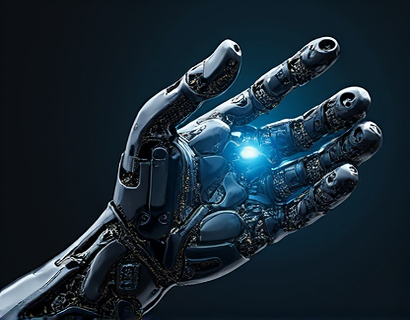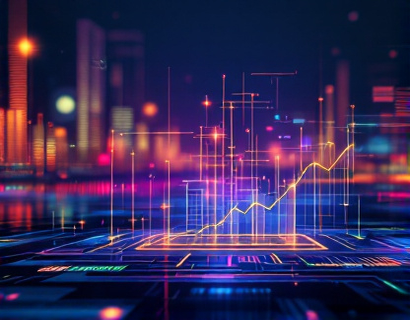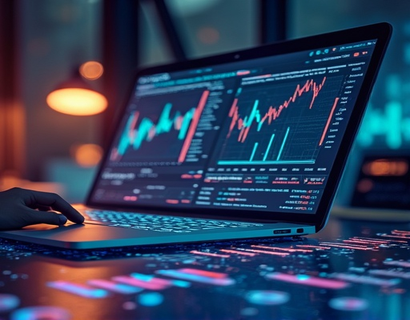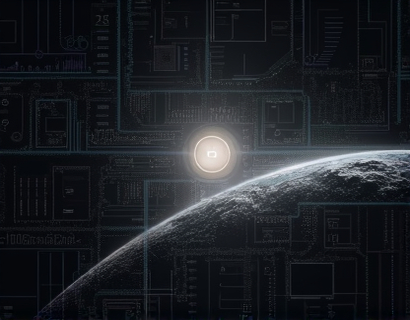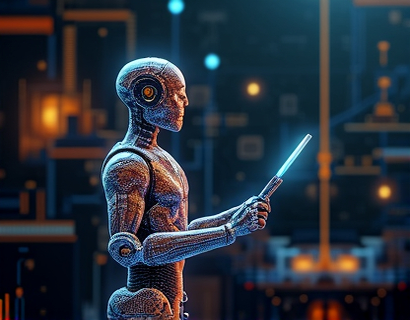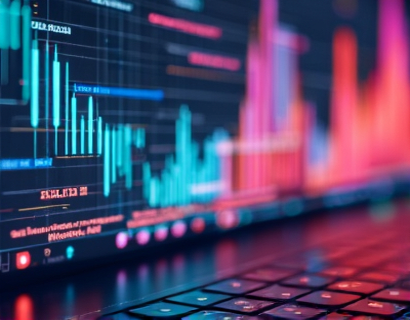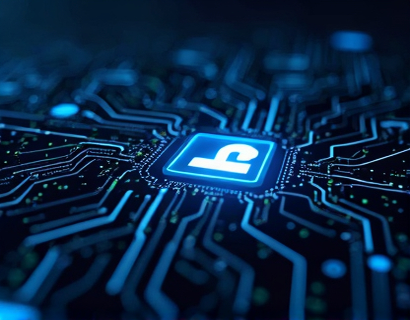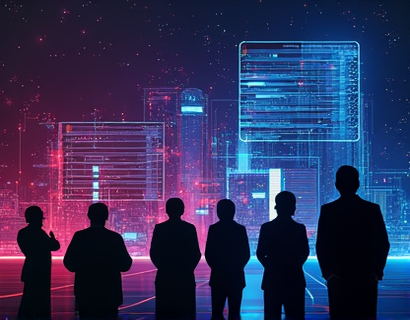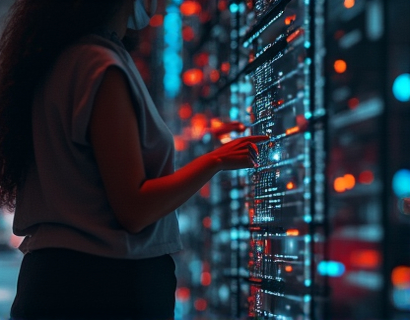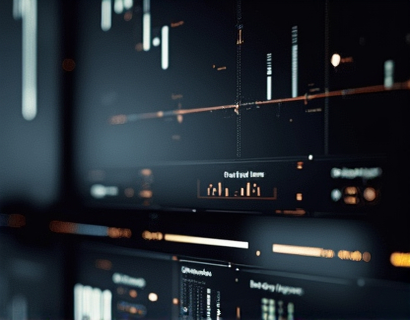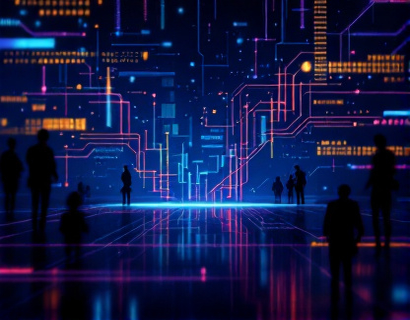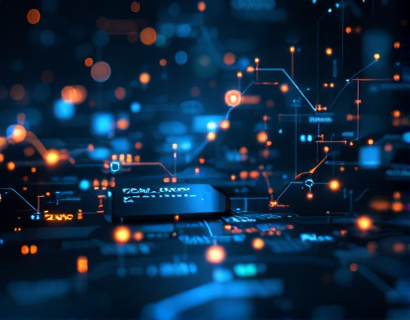Transforming Digital Experiences: The Synergy of Crypto and AI
The digital landscape is undergoing a profound transformation, driven by the powerful convergence of blockchain technology and artificial intelligence. This synergy is not just a trend but a fundamental shift in how we interact with digital services and applications. For tech innovators and early adopters, understanding this convergence is crucial to harnessing its potential and staying ahead in the rapidly evolving tech ecosystem.
The integration of blockchain and AI is revolutionizing app and service interactions, leading to unprecedented growth and engagement. This article delves into the transformative potential of these advanced technologies, providing a comprehensive guide for those looking to enhance their digital experiences. We will explore how this convergence is reshaping connectivity and elevating online presence, offering insights into the innovative solutions that are redefining the digital age.
Blockchain: The Foundation of Trust and Transparency
Blockchain technology, at its core, is a decentralized ledger that ensures transparency, security, and immutability. Each transaction is recorded in a block, which is then linked to the previous block, forming a chain. This structure makes it nearly impossible to alter any data without consensus from the network, thereby maintaining the integrity of the information.
The decentralized nature of blockchain eliminates the need for intermediaries, reducing costs and increasing efficiency. In the context of digital experiences, this means that users can interact with services and applications with greater trust and control over their data. Smart contracts, self-executing contracts with the terms directly written into code, further automate and secure transactions, reducing the risk of fraud and errors.
AI: The Intelligence Behind the Curve
Artificial intelligence, on the other hand, brings a level of intelligence and adaptability to digital systems. AI algorithms can analyze vast amounts of data, learn from patterns, and make predictions or decisions with minimal human intervention. This capability is particularly valuable in enhancing user experiences by personalizing content, optimizing performance, and providing intuitive interactions.
Machine learning, a subset of AI, enables systems to improve their performance over time without being explicitly programmed. Natural language processing (NLP) and computer vision are key areas where AI excels, allowing for more natural and effective communication between humans and machines. These technologies are pivotal in creating seamless and engaging digital experiences.
Convergence of Blockchain and AI: A Powerful Synergy
The true power of blockchain and AI is realized when they are combined. This convergence creates a synergy that amplifies the strengths of both technologies, leading to innovative solutions that were previously unimaginable. Here are some key areas where this synergy is making a significant impact:
- Enhanced Security and Privacy: Blockchain's inherent security features, combined with AI's advanced encryption and anomaly detection capabilities, create a robust framework for protecting user data and ensuring privacy. This is particularly important in industries such as finance, healthcare, and e-commerce, where data security is paramount.
- Personalized User Experiences: AI can analyze user behavior and preferences to deliver personalized content and recommendations. When integrated with blockchain, this personalization is secured and transparent, ensuring that users have control over their data and how it is used. This leads to higher user satisfaction and engagement.
- Decentralized Applications (DApps): The combination of blockchain and AI is giving rise to decentralized applications that leverage the power of both technologies. DApps can offer decentralized services with intelligent decision-making, creating more resilient and user-centric applications. For example, AI-driven predictive analytics can be used in decentralized finance (DeFi) platforms to optimize trading strategies and manage risks.
- Trustless Interactions: Blockchain's trustless nature, where trust is derived from the network rather than a central authority, complements AI's ability to facilitate complex interactions. This combination enables seamless and secure transactions without the need for intermediaries, reducing friction and increasing efficiency.
- Data Marketplaces: AI can help manage and analyze the vast amounts of data generated by blockchain networks, creating valuable insights and driving new business models. Data marketplaces can emerge where users can monetize their data while maintaining control and privacy, thanks to blockchain's secure and transparent ledger.
Real-World Applications and Use Cases
The potential applications of blockchain and AI convergence are vast and varied. Here are some real-world examples that illustrate the transformative impact of this synergy:
1. Supply Chain Management: Companies like IBM and Maersk have developed blockchain-based platforms that use AI to optimize supply chain operations. These platforms provide real-time tracking, predictive maintenance, and fraud detection, ensuring transparency and efficiency throughout the supply chain.
2. Healthcare: In healthcare, blockchain can securely store and manage patient data, while AI can analyze this data to provide personalized treatment plans and predict disease outbreaks. For instance, Medibloc is a blockchain platform that ensures secure and interoperable health data management, enhanced by AI for predictive analytics.
3. Finance: The finance sector is rapidly adopting blockchain and AI to create more secure, efficient, and personalized financial services. DeFi platforms use AI to automate trading, manage risk, and offer customized financial products. Blockchain ensures transparency and security, while AI enhances the user experience through intelligent insights and automation.
4. Retail: Retailers are leveraging blockchain and AI to create seamless shopping experiences. Blockchain can ensure the authenticity and provenance of products, while AI can provide personalized recommendations and optimize inventory management. For example, Walmart uses blockchain to track the origin and journey of food products, ensuring safety and transparency, augmented by AI for demand forecasting and inventory optimization.
Challenges and Considerations
While the convergence of blockchain and AI offers immense potential, there are several challenges and considerations that must be addressed:
1. Technical Complexity: Integrating blockchain and AI requires a deep understanding of both technologies. Developers need to navigate the complexities of decentralized systems and advanced algorithms, which can be a barrier for some organizations.
2. Scalability: Blockchain networks, particularly public ones, can face scalability issues due to their consensus mechanisms. AI algorithms, especially those requiring significant computational power, can exacerbate these issues. Solutions like sharding and layer 2 protocols are being explored to address scalability.
3. Regulatory Environment: The regulatory landscape for blockchain and AI is still evolving. Compliance with data protection laws, such as GDPR, and navigating the legal implications of decentralized systems are critical considerations for organizations.
4. Energy Consumption: Blockchain, particularly proof-of-work systems, is known for its high energy consumption. Combining this with AI, which also requires substantial computational resources, raises concerns about sustainability. Exploring more energy-efficient consensus mechanisms and green AI practices is essential.
Future Outlook: Embracing the Next-Gen Ucosystem
The future of digital experiences lies in the continued integration and innovation of blockchain and AI. As these technologies mature, we can expect to see more sophisticated and user-centric applications that redefine how we interact with digital services. The next-gen Ucosystem will be characterized by:
- Enhanced Security and Privacy: Users will enjoy greater control over their data and enhanced security measures, fostering trust in digital platforms.
- Personalized and Intelligent Interactions: AI-driven personalization will become more prevalent, offering tailored experiences that adapt to individual preferences and behaviors.
- Decentralized and Resilient Systems: Blockchain will play a crucial role in creating decentralized applications and networks that are more resilient to failures and cyber threats.
- Sustainable and Ethical Practices: The industry will increasingly focus on energy-efficient solutions and ethical AI, ensuring that technological advancements align with environmental and social responsibilities.
For tech innovators and early adopters, embracing this convergence is not just an opportunity but a necessity. By leveraging the power of blockchain and AI, they can create innovative solutions that drive growth, engagement, and transformation in the digital landscape.




